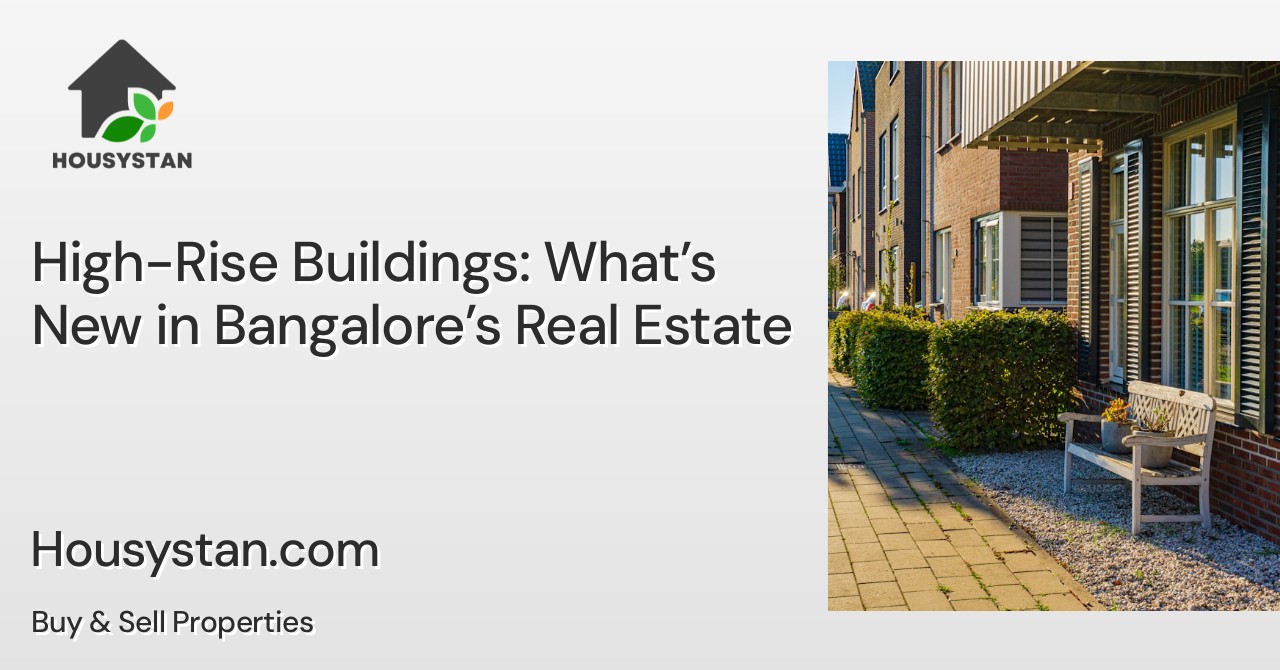High-Rise Buildings: What’s New in Bangalore’s Real Estate
Read latest blogs and articles from Housystan

The Information mentioned here was last updated on:
2/12/2025Bangalore, widely recognized as India’s Silicon Valley, is currently witnessing a remarkable transformation in its skyline. The demand for high-rise buildings in Bangalore’s real estate market is soaring, driven by the city’s rapid urbanization and influx of professionals. These towering structures are not just altering the cityscape but also redefining the standards of urban living. If you are searching for modern residences or lucrative investment options in Bangalore, understanding the latest trends in high-rise construction is crucial.
One of the most significant innovations in Bangalore’s high-rise sector is the integration of sustainable architecture. Builders and developers are focusing on eco-friendly designs, energy-efficient systems, and green building certifications to appeal to environmentally conscious buyers. Features such as solar panels, rainwater harvesting, and advanced waste management systems are now standard in many high-rise residential complexes. These green initiatives not only lower utility costs but also promote a healthier lifestyle for residents.
Location plays a pivotal role in the popularity of high-rise projects across Bangalore. Neighborhoods like Whitefield, Electronic City, Hebbal, and Koramangala have emerged as hotspots for vertical growth, attracting attention from both homebuyers and investors. Proximity to tech parks, educational institutions, healthcare facilities, and entertainment centers makes these areas highly desirable for professionals and families alike.
- Verified Tenants/Buyers
- Unlimited Property Listing
- Zero subscription/charges fee
Another trend shaping Bangalore’s high-rise real estate is the emphasis on luxury amenities. Modern towers offer world-class facilities such as infinity swimming pools, rooftop gardens, fitness centers, clubhouse spaces, and dedicated children’s play zones. Enhanced security systems, smart home automation, and concierge services are also becoming standard, providing residents with unparalleled comfort and convenience.
Connectivity is a major advantage of living in Bangalore’s high-rise buildings. Seamless access to major highways, metro lines, and arterial roads ensures swift commutes to business districts and leisure destinations. With the ongoing expansion of Bangalore’s public transport network, high-rise communities are set to become even more accessible and attractive.
For those looking to invest or reside in Bangalore, high-rise buildings represent a blend of sophistication, modernity, and practicality. With state-of-the-art amenities, eco-friendly features, and strategic locations, these developments offer an exceptional lifestyle and promising returns. Explore Bangalore’s high-rise real estate market today to experience the future of urban living in this dynamic city.